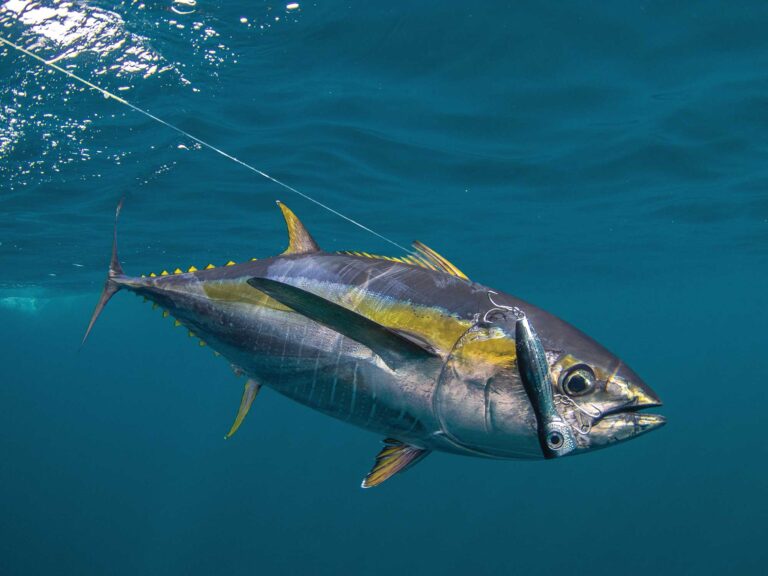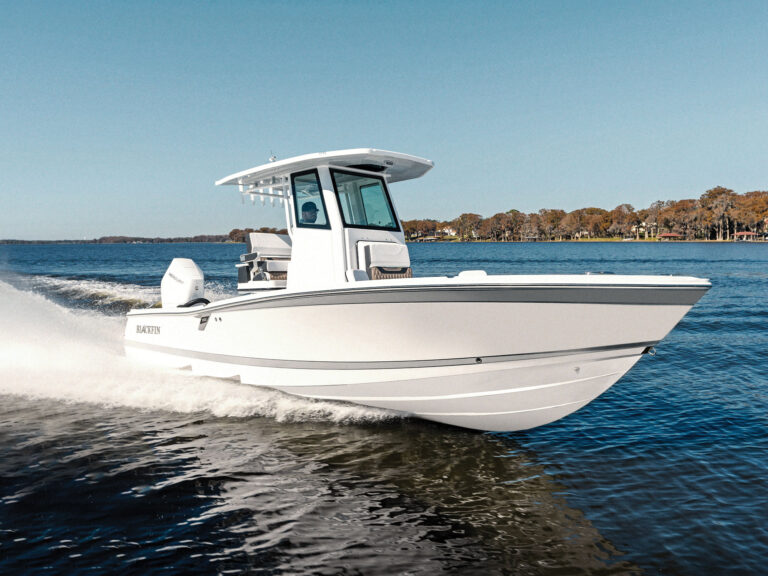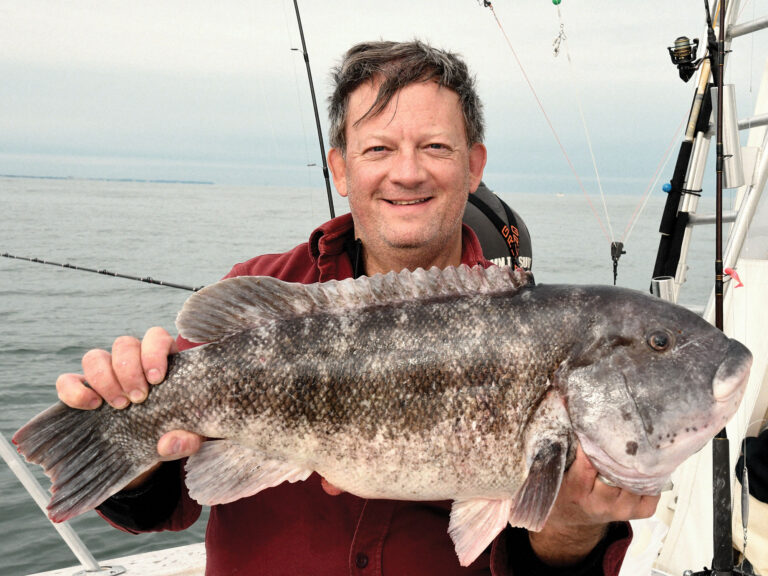A jagged chunk of seagull-encrusted concrete peeked just above the water line, offering evidence of a larger structure lurking just beneath the surface. I flicked my suspending stick bait past it, cranking it down to about five and some change. Earlier that morning, a slow-turn, erratic retrieve had proved to be the most effective. Three twitches, then a short pause worked the best. My 12-pound super braid shuttered as the bait banged into the concrete. At that split second, I killed the retrieve.
I kept my eye on the line for any sign of life below. For a fleeting second, my heart’s cadence rattled in my temples and the salty mid-June sweat crept down my cheeks. My line gently ticked—instinctively I snapped my rod tip to attention to 12 o’clock. The bait’s trebles punched hard, reflexively she countered, lurching straight down waking up my drag.
Summer is here, a time when fish seek deep water refuge as surface temperatures soar. When the mercury sends fish south, one of the best tactics for a heavy haul is lobbing suspending baits.
Personally, I opt for the long, slender, stick-style jerk baits. For me, these excel for several reasons. First, they’re considerably easier to crank than pudgy-bellied baits with their wide bills. Secondly, they have a tight wiggle, an action that imitates the natural swimming action of frantic baitfish. And lastly, when paused, they suspend just like a baitfish who’s stopped to take a breather.
Under most conditions, spinning gear excels when pitching suspending baits as they’re able to zing baits in windy conditions that cripple baitcasters. A spinning rod also allows you to gather line quickly after fishing the most productive water in a less tiring manner than a baitcaster. And, with braided super lines, spinners are no longer hamstrung by light-poundage monofilament lines.
No matter the style of equipment you choose, working suspending jerk baits is easy. When working cover, such as brambled shorelines, dock pilings, bridge abutments, and emergent weeds, simply cast past the target. Crank the bait down to depth, then start your retrieve. An erratic retrieve works best, and pausing (or “killing it”) increases bites and hook-ups tenfold.
Pausing works best if you freeze the bait as it passes the structure as this often triggers a reaction strike from fish posted tight to cover. For an aggressive presentation, try ripping the bait on a fast retrieve, with erratic, crisp twitches of the rod tip, with short pauses. Remember, the majority of strikes occur on the pause.









